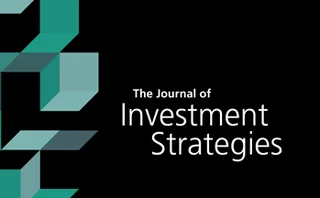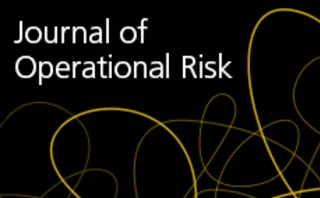Quantiles
Analyzing the impact of energy prices on US stock market volatility
Using data from January 1986 to December 2023, the authors explore the time-varying impact of energy prices on the US stock market.
The arcsine law for quantile derivatives
A new pricing model for quantile-based derivatives, such as Napoleon options, is presented
Causality between oil prices and exchange rates: a quantile-on-quantile analysis
This study examines the causal link between the crude oil price and the exchange rate in five major oil-exporting countries (Saudi Arabia, Russia, Canada, the United Arab Emirates and the United States) that have recently adopted different exchange rate…
Body and tail: an automated tail-detecting procedure
The quality of a tail model, which is determined by data from an unknown distribution, depends critically on the subset of data used to model the tail. Based on a suitably weighted mean square error, the authors present a completely automated method that…
Monetary policy uncertainty and jumps in advanced equity markets
The authors analyze the role of monetary policy uncertainty in predicting jumps in nine advanced equity markets.
Economic policy uncertainty, investors’ attention and US real estate investment trusts’ herding behaviors
Using a quantile regression model, this study examines economic policy uncertainty and investors’ attention for policy risk on US real estate investment trusts’ (REITs’) herding behaviors.
Estimating marginal effects of key factors that influence wholesale electricity demand and price distributions in Texas via quantile variable selection methods
Using a large data set from the Electric Reliability Council of Texas, this study uses quantile regressions and attendant variable selection methods to choose the most important factors that influence demand and price distributions; subsequently, the…
Value-at-risk in the European energy market: a comparison of parametric, historical simulation and quantile regression value-at-risk
This paper examines a set of value-at-risk (VaR) models and their ability to appropriately describe and capture price-change risk in the European energy market.
Extending risk budgeting for market regimes and quantile factor models
In this paper, the authors combine several disparate avenues in the literature to create a novel, unified risk-based optimization framework.
Asymmetry herding behavior of real estate investment trusts: evidence from information demand
This paper investigates the effect of investor demand on herding behavior in the US real estate investment trusts (REITs) market by measuring investors’ information demand using Google’s search volume index.
Forward-looking and incentive-compatible operational risk capital framework
This paper proposes an alternative framework for setting banks’ operational risk capital, which allows for forward-looking assessments and limits gaming opportunities by relying on an incentive-compatible mechanism.
Freeriding on liquidity in the Colombian large-value payment system
The functioning of a large-value payment system (LVPS) can be affected when some of its participants intentionally decide to delay their payments until they can fund them with payments received from other participants. This payment strategy, known as the…
The CoCVaR approach: systemic risk contribution measurement
In this paper, the authors propose a measure for systemic risk, CoCVaR, the conditional value-at-risk (CVaR) of the financial system conditional on an institution being in financial distress.
Various approximations of the total aggregate loss quantile function with application to operational risk
This paper investigates the mechanics of the empirical aggregate loss bootstrap distribution.
Fitting a distribution to value-at-risk and expected shortfall, with an application to covered bonds
This paper suggests simple and intuitive models for covered bonds that allow quantitative assessment of expected loss and the impact of asset encumbrance.
A simulation comparison of quantile approximation techniques for compound distributions popular in operational risk
The objective of this paper is to compare numerical approximation techniques in terms of their practical usefulness and potential applicability in an operational risk context.
Approximations of value-at-risk as an extreme quantile of a random sum of heavy-tailed random variables
The authors of this paper study the approximation of extreme quantiles of random sums of heavy-tailed random variables. More specifically, sub-exponential random variables.









